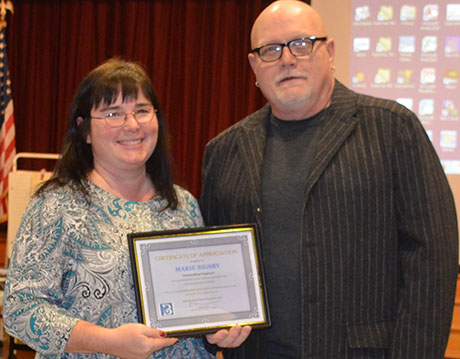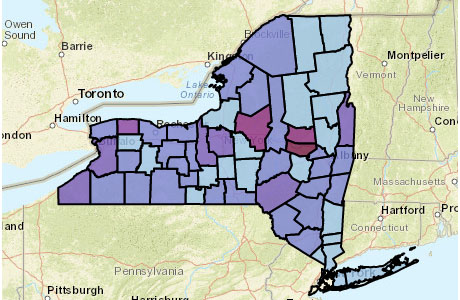Children being exposed to lead, leading to higher risk of learning disabilities and a risk for other health issues, has regularly been in the news ever since contaminated water was found to be flowing into the homes of Flint, Mich.
This week, the Reuters news agency released a report indicating that 3,000 neighborhoods across the nation seem to have high lead contamination levels.
No neighborhoods in Genesee County appear to be on that list, according to data available through a New York State website that tracks reports of lead poising in children.
In 2012, only four children under age 2 of the 1,036 in the county who were tested had elevated lead levels detected in their blood samples.
Paul Pettit, director of the health departments in Genesee and Orleans counties, said the relevantly few children with elevated lead levels does seem to confirm that there is no widespread contamination in the community.
That doesn't mean it's not an important issue, he said.
The likely culprit in the four cases is lead paint in homes.
Any housing unit built before 1978 may contain lead paint. The paint on older homes chips or gets ground into dust by the opening and closing of doors and windows, and lead particles can fall into carpet or onto flooring where children crawl.
The easiest way to remediate lead paint is to paint over it, which doesn't eliminate the lead paint but does stop the lead particles from spreading. Children can also be exposed to lead while visiting a friend or family member's house, or if parents work in an environment where lead is present and it attaches to clothing or shoes.
Pettit said parents should have their children tested at age 1 and age 2, for sure, though lead continues to be a risk factor for children through at least age 6.
Typically, the test is conducted in the office of a primary health care physician. It consists of a pinprick on the child's finger and the blood can typically be tested right in the office.
If elevated levels are detected, the child is typically referred to a lab where blood can be drawn and more thoroughly tested.
Ideally, a child will have no lead detected in his or her blood.
The amount of lead is counted by micrograms per deciliter, abbreviated to mcg/dL.
Of the four children in 2012 with elevated lead levels in their blood, one fell within the 10 to 15 mcg/dL range and three were above 15.
Those levels are consistent with a child being exposed to lead paint particles, Pettit said.
When you start seeing children with counts of 50, 60 or higher, it usually means they've ingested something contaminated with lead, such as a paint chip.
In 2012, about 50 to 60 percent of the children who should have been tested for lead were tested for lead, Pettit said.
More recent data was not readily available, but Pettit said of his 20 years involved in public health in the two counties, the numbers of children with elevated lead levels has remained pretty consistent.
When a child is found to have elevated lead levels, in the range up to 15 mcg/dL, the health department works with the parents where the child lives to eliminate possible sources of lead.
When the level is over 15, the process is more involved, Pettit said. Personnel from the health department visit the home and do a lead risk assessment and develop with the homeowner or landlord a corrective action plan. Landlords are typically cooperative, but the department can issue a "notice and demand" to remediate any problems identified.
"At 15 and above, it is a serious health issue to the child," Pettit said. "We take intervention steps to stop it."
When levels of 50 or 60 mcg/dL, children are hospitalized so the lead can be removed from their blood.
Lead poisoning in children is associated with cognitive issues and health issues can include decreased bone and muscle growth, poor muscle coordination, damage to the nervous system, kidneys and hearing.
Petit said he welcomed the opportunity to talk about the issue because he would like to see more awareness among parents on the importance of testing. Every child should be tested.

























